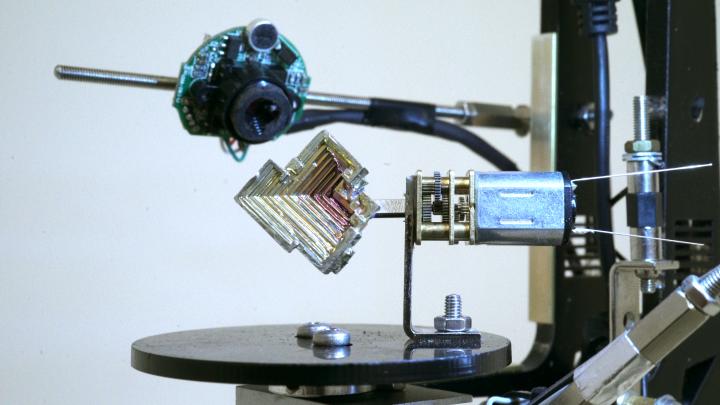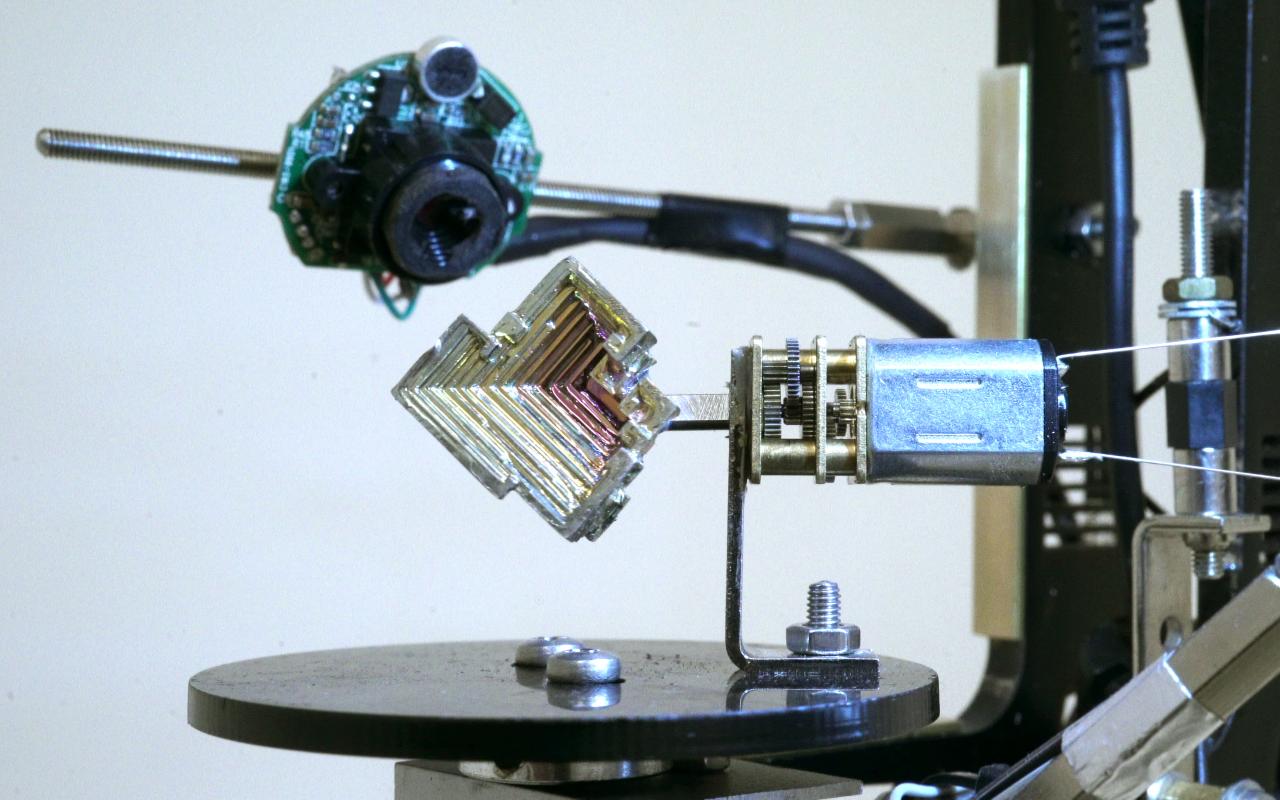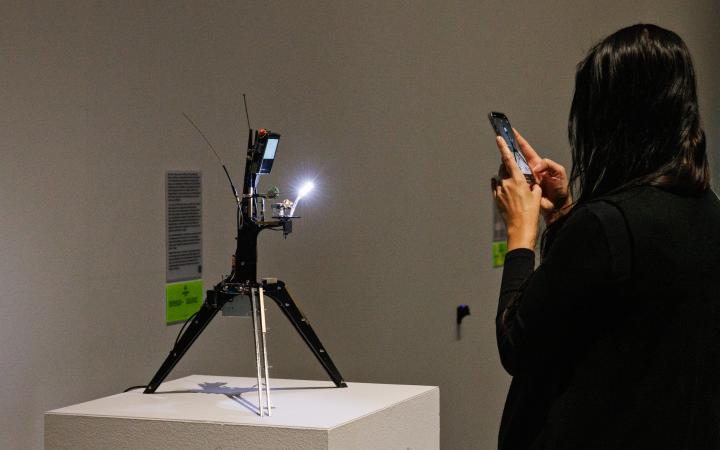::vtol::
navigator

- Artists
- ::vtol::
- Title
- navigator
- Year
- 2021
- Medium / Material / Technic
- DC motors, LCD, RPi, web cam, electronics, programming languages: Python, CycleGAN
-
People tend to recognize meaningful images in immaterial shapes – such as seeing animals in cloud formations or faces in spots. Leonardo da Vinci recognized the value of this kind of perception for artists: “By looking attentively at old and smeared walls, or stones and veined marble of various colours, you may fancy that you see in them several compositions […] By these confused lines the inventive genius is excited to new exertions.” (»A Treatise on Painting«)
::vtol:: uses sophisticated technological means to continue what began 500 years ago. His »navigator« is an autopoietic image production instrument programmed to fantasize. A camera provides images of a bismuth crystal from various perspectives, which are subsequently processed by an image-to-image translation program to detect structures and patterns. The resulting images shown on a small display resemble maps that do not refer to any actual geographies.
This machine-generated fiction is linked to science in an unexpected way. In fact, in recent decades, researchers studying complex systems have pointed out astounding parallels between the growth of certain crystal clusters and that of large cities, inspired by fractal geometry.
Does the programmed transfer of human imaginative competence into an apparatus represent an estrangement? Or does it primarily reflect the plasticity of our combinatorial imagination? Between input and output, there is a broad range of combinational logics, which oscillate between science, art, and madness.


